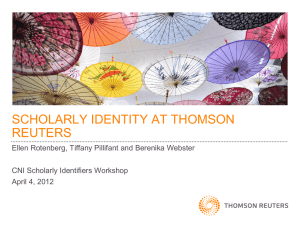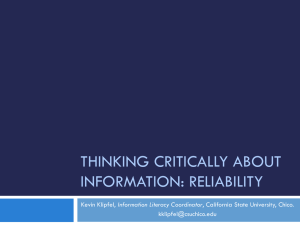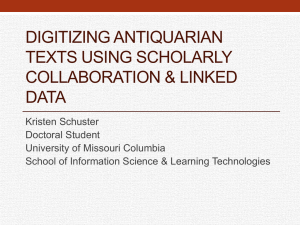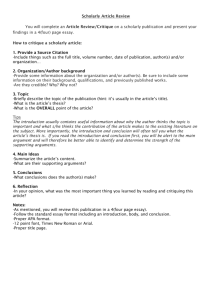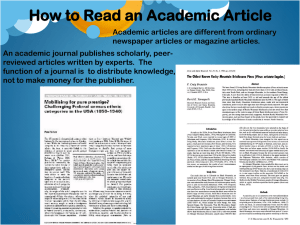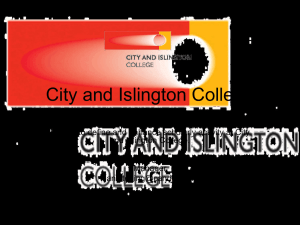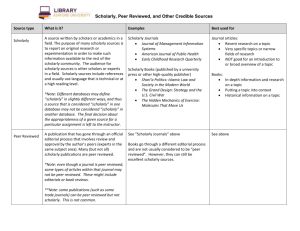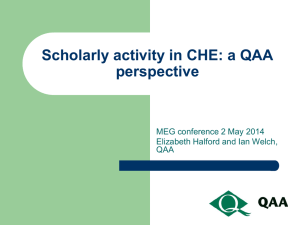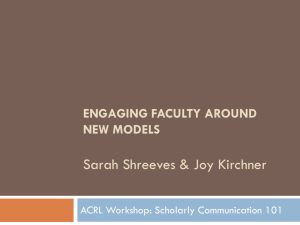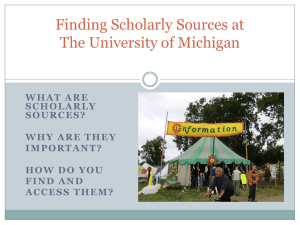literature_review
advertisement
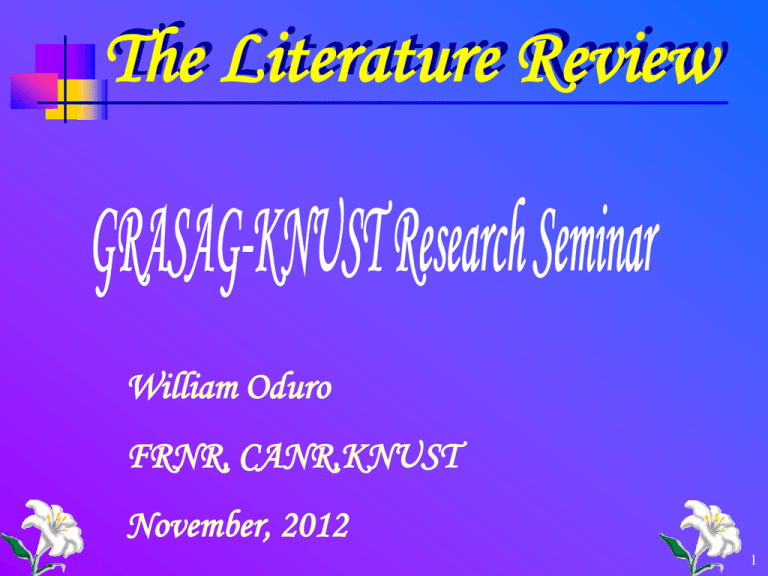
The Literature Review William Oduro FRNR, CANR,KNUST November, 2012 1 The Literature Review The review of the literature is defined as a broad, comprehensive, indepth, systematic, and critical review of scholarly publications, unpublished scholarly print materials, audiovisual materials, and personal communications 2 The Literature Review The review of the literature is traditionally considered a systematic and critical review of the most important published scholarly literature on a particular topic. Scholarly literature refer to published and unpublished data based literature and conceptual literature materials found in print and non print forms Data based literature reports of completed research Conceptual research reports of theories, 3 concepts Relationship Of Review Of Literature To Theory, Research, Education And Practice Research Review of Literature Education Practice Theory 4 Purposes of Literature Review The overall purpose of literature review is to discover knowledge Research purposes of literature review: 1. Determines an appropriate research design/method (instruments, data collection and analysis methods) for answering the research question 2. Determines the need for replication of a well designed study or refinement of a study 5 Purposes of Literature Review Non Research purposes of literature review: 1. Determines what is known about a subject, concept or problem 2. Determines gaps, consistencies & inconsistencies about a subject, concept or problem 3. Discovers unanswered questions about a subject, concept or problem 4. Describes strengths & weaknesses of designs, methods of inquiry and instruments used in earlier works 6 Purposes of Literature Review Non Research purposes of literature review: 5. Discovers conceptual traditions used to examine problems 6. Generates useful research questions or projects/activities for the discipline 7. Promotes development of protocols & policies related to e.g. nursing practice 8. Uncovers a new practice intervention, or gains support for changing a practice intervention 7 Differences of Research & Non Research Purposes Whether a nurse is developing a research study, a curriculum, or a patient protocol, s/he should base that project on a critical review of the literature The difference lies in the type of outcome produced 8 The Use of Literature Review in Quantitative Research Theoretical framework The literature defines concepts and terms in relation to the study Problem statement and hypotheses The literature review helps to determine what is known and not known; to uncover gaps, consistencies, or inconsistencies, and/or to reveal unanswered questions about a subject, concept or problem The literature review allows for refinement of research problems and questions and/or hypotheses 9 The Use of Literature Review in Quantitative Research Design and method The literature review reveals strengths and weaknesses of designs and methods of previous research studies Outcome of the analysis (findings, implications, and recommendations) The literature review is used to discuss the results or findings of a study. The discussion relates the study’s findings to what was or was not found in the review of literature 10 The Literature Review and Consumers of Research Literature review helps consumers of research e.g. students to: 1. Efficiently retrieve an adequate amount of scholarly literature using computer and print resources 2. Critically evaluate data based and conceptual material 3. Critically evaluate a review of the literature (the entire compilation of conceptual and data based literature) based on accepted 11 Literature Review Synonymous Conceptual literature Theoretical literature Scholarly non research literature Scholarly work Soft versus hard science literature Review of the literature article Concept analysis article Data based literature Empirical literature Scientific literature Research literature Scholarly research literature Research study study 12 Steps of Searching the Literature Determine concept/issue/topic/problem Conduct computer (and/or hand) search Weed out irrelevant sources before printing Organize sources from printout for retrieval Retrieve relevant sources Conduct preliminary reading and weed out irrelevant sources Critically read each source (summarize & critique each source) Synthesize critical summaries Primary and Secondary Sources Primary source: is written by a person(s) who developed the theory or conducted the research Secondary source: is written by a person(s) other than the individual who developed the theory or conducted the research 14 The Role of Secondary Sources Two general reasons for using secondary sources: 1. A primary sources is literally unavailable 2. A secondary source can provide different ways of looking at an issue or problem Secondary sources should not be overused 15 Pitfalls of Secondary Sources All of the theory’s concepts or aspects of the study and/or definitions may not be fully presented If all concepts or aspects are included, the definitions may be collapsed or paraphrased to such a degree that it no longer represents the theorist’s actual work The critique (whether positive or negative) is based on the presentation of incomplete or interpreted data and therefore less useful to the consumer 16 Critiquing Criteria for a Review of the Literature 1. Does the literature review uncover gaps or inconsistencies in knowledge? 2. How does the review reflect critical thinking? 3. Are all the relevant concepts and variables included in the review? 4. Dose the summary of each reviewed study reflect the essential components of the study design? 17 Critiquing Criteria for a Review of the Literature 5. Does the critique of each reviewed study include strengths, weaknesses, or limitations of the design; conflicts; and gaps or inconsistencies in information in relation to the area of interest? 6. Were both conceptual and data based literature included? 7. Were primary sources mainly included? 8. Is there a written summary synthesis of the reviewed scholarly literature? 18 Critiquing Criteria for a Review of the Literature 9. Does the synthesis summary follow a logical sequence that leads the reader to why there is the need for the particular research or non research project? 10. Did the organization of the reviewed studies (i.e. chronologically, or according to concepts/variables, or type/design of study) follow logically, enhancing the ability of the reader to evaluate the need for the particular research or non research project? 11. Does the literature review follow the purpose(s) of the study or non research project? 19 Thank You 20
